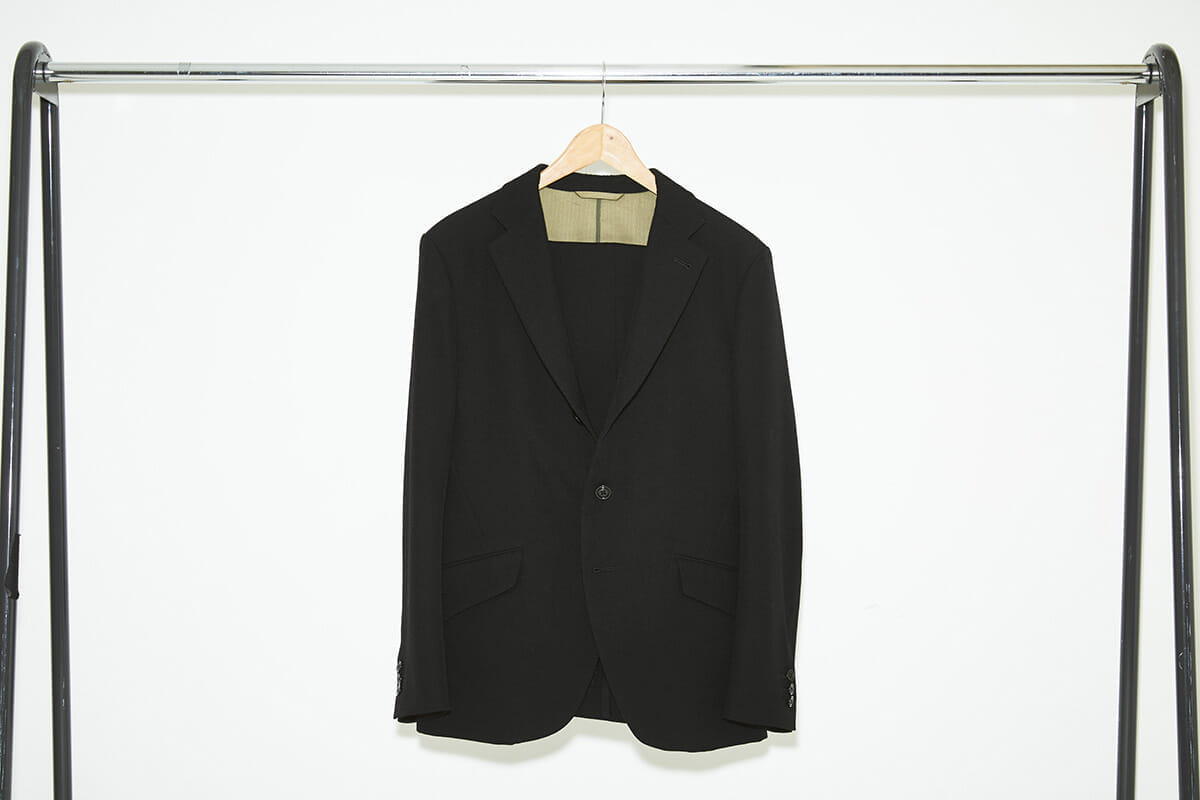
Please tell us a little about what you made this time. It comes in two colors, black and olive, doesn't it?
the recently departed (and buried or cremated, etc.)Yes, I was thinking of the color olive or olive drab. The military uniforms of the time that I had in mind were made in a color called olive or olive drab. The color was a bit more brownish than olive. So, even from a military perspective, it was meaningful to use this color. The color is also very calm, so I think it is easy to wear. There are only secondhand clothes that have this color and a crisp atmosphere. Ogi mentioned earlier that tailor's elements were added to military clothes before the 1950s, and old military clothes were made with great care. You can still feel the craftsman's hands in many of them, and the tailoring is so good that even decades-old items can still be worn today. They are totally different from the modern ones that are just put on the line by a machine.
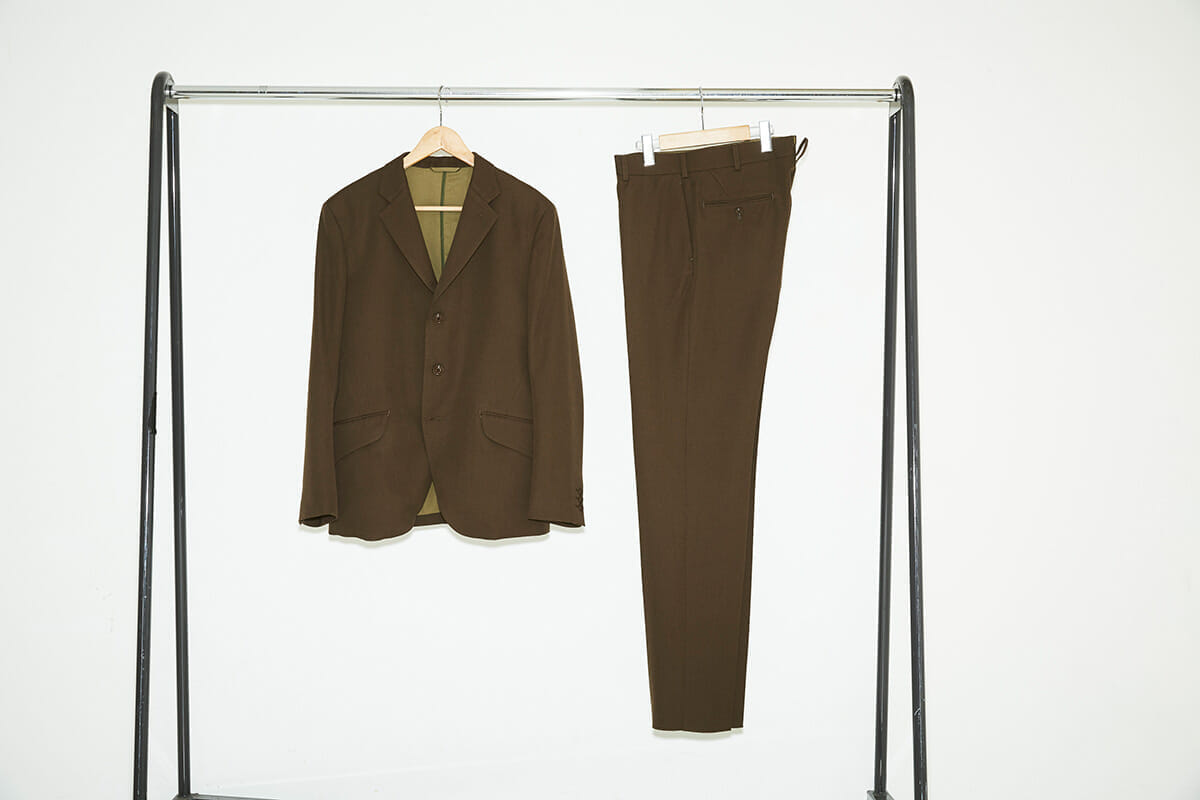
Suit ¥75,000+TAX
I hear that a lot, don't you?
the recently departed (and buried or cremated, etc.)What I want to make is not mass-produced clothes, but clothes that have the warmth of human hands. A jacket is not an inexpensive item, so if you think about wearing it for a long time, a properly made jacket will last longer. However, it is not just a matter of using a horsehair core (which is considered to be of high quality). There is also the compatibility with the outer fabric, and it is often the case that the hair core will win out and break through the outer fabric after some time. The premise of this project was to reduce the design as much as possible and make it simple to wear. Then, we accentuated the way the darts were taken up. There are military uniforms with diagonal darts, but I had not seen any brands actually using them on jackets or coats, so I decided to use them so that they would become an icon of our company. Mr. Yasujima, isn't this quite difficult?
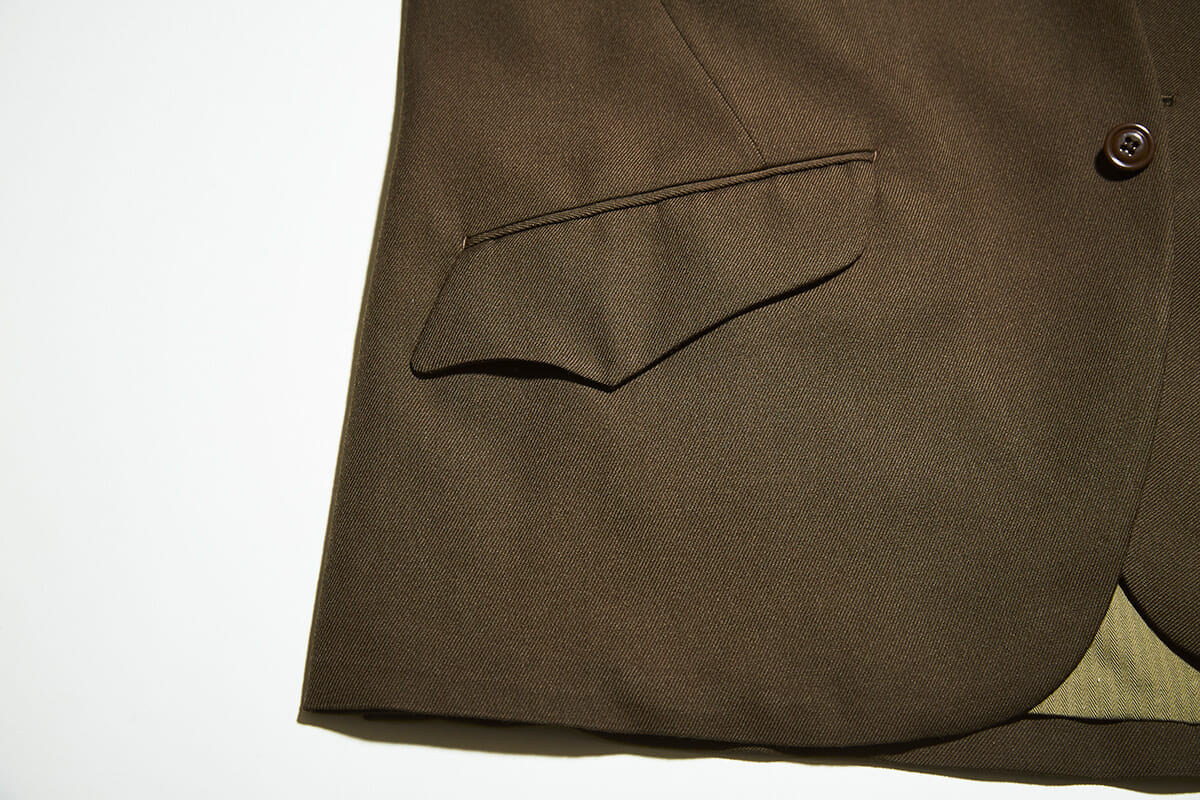
cheap island: Yes, that's right. I don't often do this because the bias makes it twisted. This time, Konno-san requested it, so I put it in at an angle and emphasized it slightly.
the recently departed (and buried or cremated, etc.)Darts are usually placed vertically, but we wanted to include an element that is easily reminiscent of the military and our icon. The same goes for the shape of the pocket flap. We had a hard time deciding where to accentuate the simplicity of the overall design. The diagonal darts and the flap are important icons that make people recognize the item as a "Nexus Seven" item.
That is certainly a strong detail.
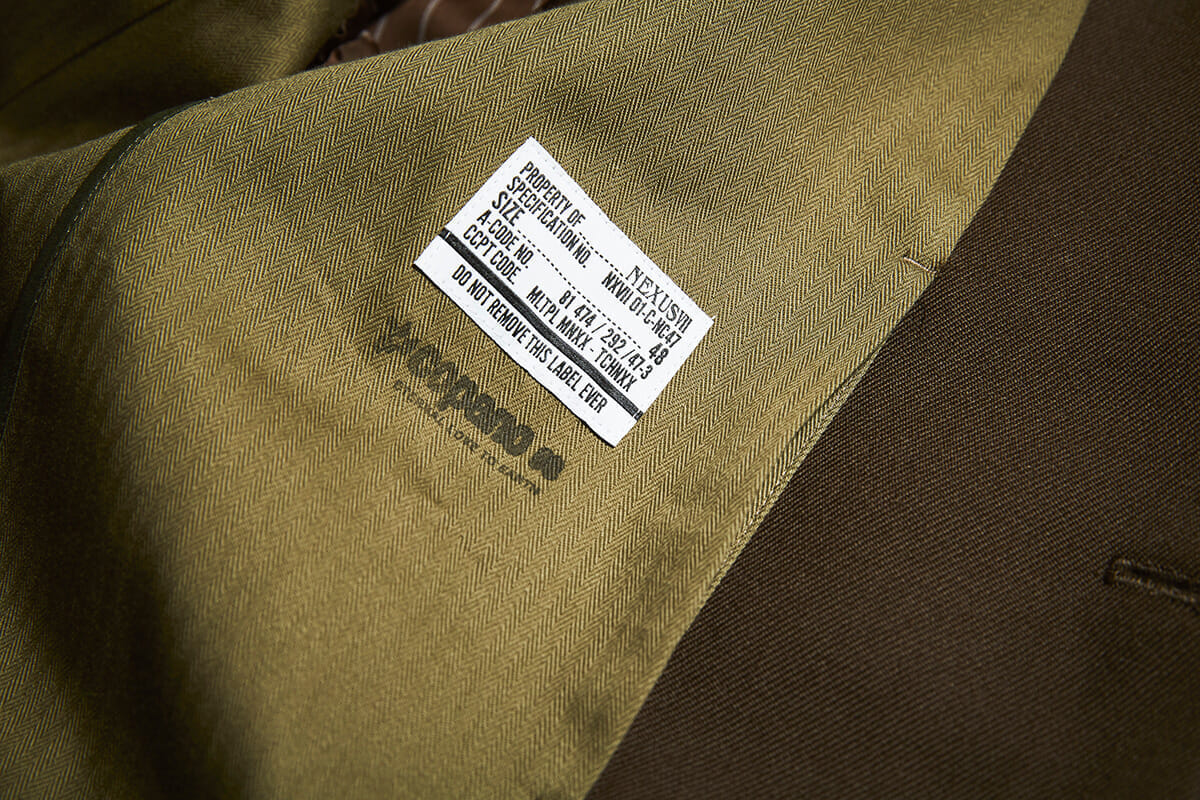
the recently departed (and buried or cremated, etc.): The lining is made of olive herringbone fabric. This was often used for items made during World War II in the 1940s, the so-called World War II models. This fabric was created to add strength to the fabric, and was often used until the 1970s, when ripstop became popular. Because of this, olive herringbone is an important fabric in my opinion that evokes a military feel.
cheap islandI made the general framework based on the concept of a military item, and then I arranged the lining specifications to incorporate things that were not available elsewhere. In this way, the entire inside is shown. Normally, I would have sewn the entire lining.
the recently departed (and buried or cremated, etc.)This allows for better airflow and ventilation.
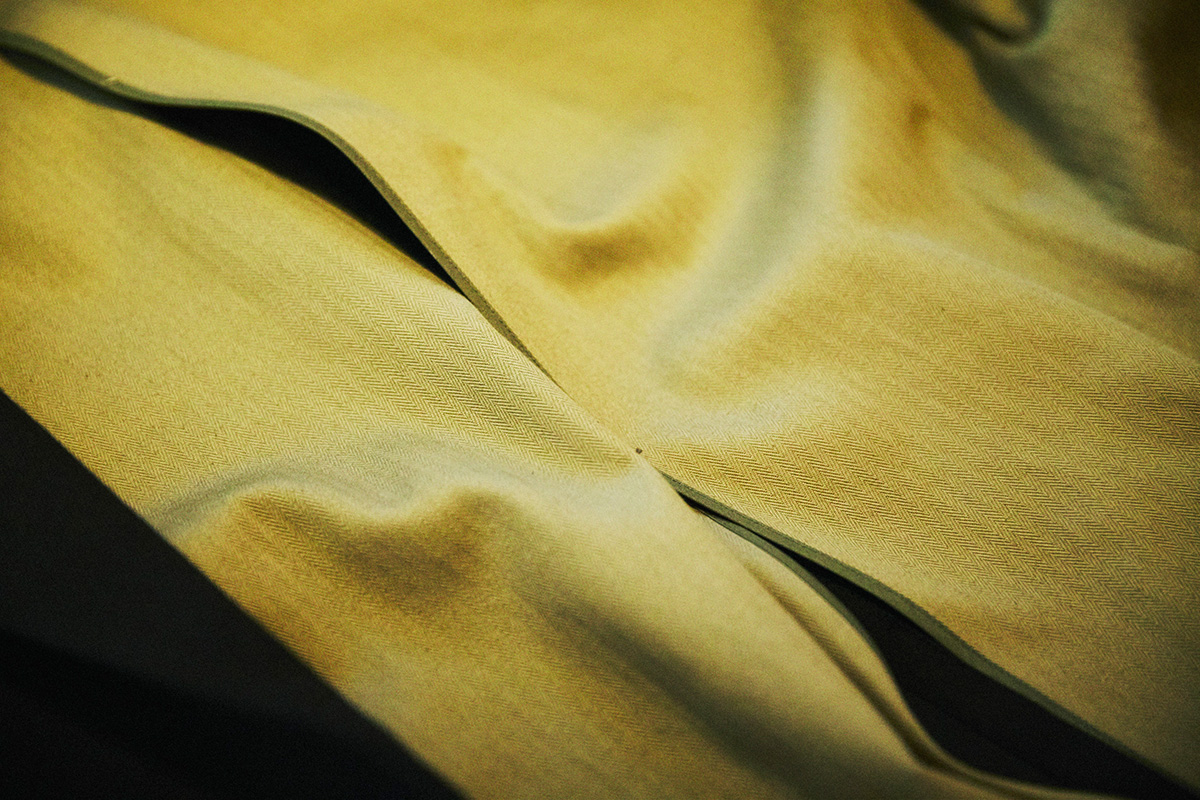
cheap islandIt is rare to find something like this that has been modified down to the inner structure.
the recently departed (and buried or cremated, etc.)I didn't have this kind of knowledge, so I learned a lot from Mr. Yasujima. At first glance, it looks like an ordinary jacket that is easy to wear, but I think these details tickle men's hearts. The buttons that catch the eye when you look at it quickly are military-style buttons with a single edge on the outside.
What kind of fabric is used?
the recently departed (and buried or cremated, etc.)The first thing we wanted to do was to use twill fabric. This is because there is a history of military uniforms being made with this kind of twill. I also had an image from the beginning that I wanted to make suits with olive drab twill, so I searched for fabrics based on these two assumptions. Mr. Yasujima accompanied me many times during the fabric search.
cheap islandI think that's what you were emphasizing a lot.
the recently departed (and buried or cremated, etc.)Yes, I think so.
How much is this?
small treeI think it was about 80,000 including tax. I think this is really cheap.
the recently departed (and buried or cremated, etc.)The price of the product is very reasonable, thanks to Mr. Yasujima's direct communication with the craftsmen and factories. We were able to release the product at this price because we were able to use such a "field" that Mr. Yasujima has cultivated for many years.
cheap islandIt should cost about 100,000 yen. It has some of the warmth of human hands in it.
the recently departed (and buried or cremated, etc.)Yes, that's right. It makes a big difference when the craftsman's hands are involved. I was looking at various suits at a time when I didn't know much about suits, but I guess just having a hand-finished part makes all the difference. Also, as I explained earlier, this jacket has an open lining that allows air to enter the back, giving it a fluffy silhouette when worn, which is also attractive.
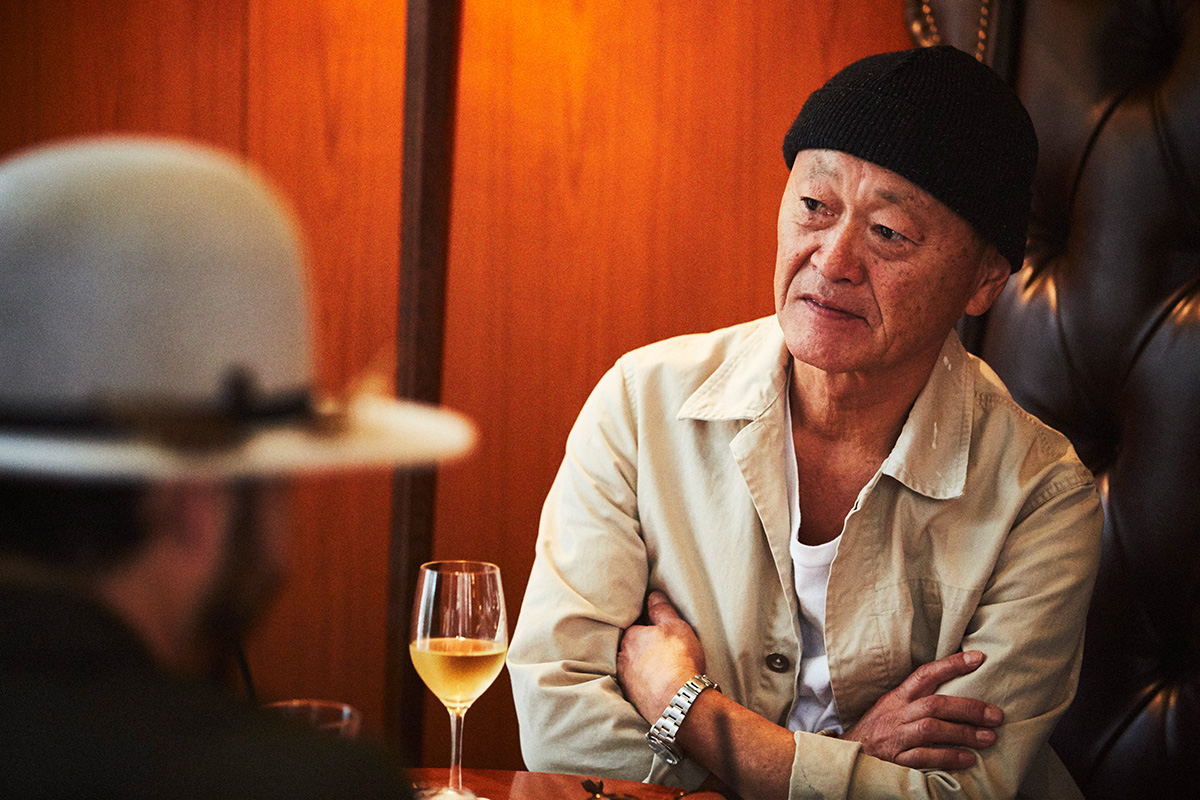
cheap islandThe factory was very reluctant to use that part. The factory was very reluctant to do that part. It takes a lot of time and effort. Also, the kan-nuki part is sewn by hand.
the recently departed (and buried or cremated, etc.)The idea was initially inspired by "military," but as a result we ended up with a set-up like this. There are a few other details that I would like to emphasize on both the jacket and the pants, but I dare not reveal them here, as only those who actually see the product can understand the design and details. Anyway, I hope that the wearer will be able to feel that this is not a work made by a streamlined production process, but something that is the result of the work of wonderful craftsmen.

